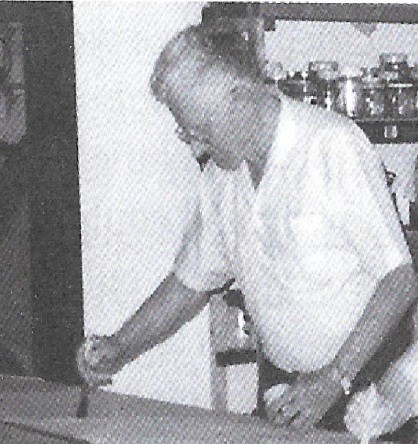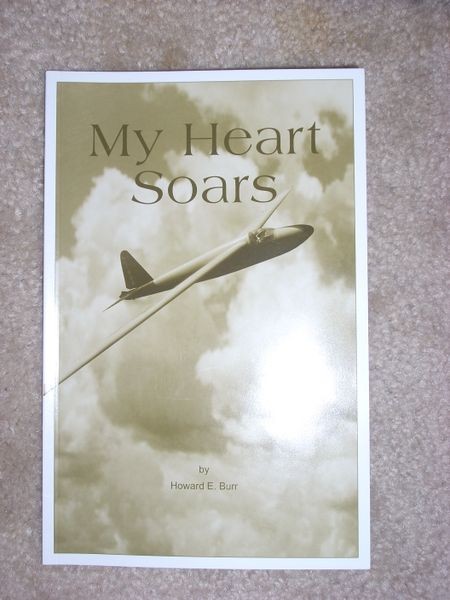Howard E. Burr
1987
about
(1914-2006) SSA Director; National Competition Director; NSM Trustee; SSA Awards Chair; Sailplane Designer/Builder; President SHA, EASC, SCSA; Author
Awards
Schweizer Award 2001; Silver #53 1946; Gold #146 1962; Symons One Lennie #43
Bio

Howie Burr started his soaring life running with the shock cord launches at the early Elmira Meets. He went from there to managing two of the largest and most active soaring clubs in the country - one on each coast.
He moved to Elmira, NY in 1945 to work for the Schweizer Aircraft Corporation. Because of his soaring involvement, he was very soon elected Secretary of the Elmira Area Soaring Corporation. Two years later he was the President and served in that capacity until 1958. During that time the club prospered and grew with special interest in youth training - one of Howie's passions. The club had been sponsors of the famed Snowbird Meet during the Thanksgiving holiday weekend. Under Howie's leadership all the events associated with this event were moved to Harris Hill, the site of the flying, to take advantage of the WPA (Works Progress Administration) facilities - the Administration Building, the hangars and cabins - built during the Depression. In 1957 he was the Contest Director for the 24th National Soaring Championships, following a tradition which started with the First National Soaring Contest in 1930 (won by Al Hastings flying a Franklin). Elmira was truly "The Soaring Capital of America."
Howie moved West in 1959 and chose Tehachapi, CA as his base of soaring operations. From 1966 to 1968 he was President of the Southern California Soaring Association where he once again became involved in youth training - including winch training on the Dry Lake near El Mirage.

Howie had seen his first airplane about the end of WW I. It was then that he was inspired to follow an aviation career with emphasis on home-building. As a young boy he followed the usual activities of aircraft model building and flying even winning a contest which enabled him to have his first adventure into the air - the prize was a flight in a straight-wing Stinson, six place single-engine airplane. When he was of college age, Howie attended Pratt Institute of Technology in Brooklyn, NY, graduating in 1936 and started his long career in aviation. His professional employment included Sikorsky, IBM, Curtiss Aircraft, Bell Aircraft during WW II, Schweizer Aircraft from 1945 to 1959, Lockheed Aircraft, Air Research and Winter Aviation - the typical migration of people in the aviation business in those transitional days - finally retiring in 1976.
Since his childhood days, Howie had wanted to build an aircraft. In 1949, his early dream of building a glider started to come true. This dream turned into the Schweizer SGS 1-24, which he built in cooperation with the Schweizer Brothers and named the Brigadoon. On July 2, 1953, Howie had the joy of making the first flight in an aircraft he had designed and built himself.

After the 1-24, Howie accelerated his love of home-building and encouraged his sons to restore the historic Schweizer SGU 1-7, one remaining of only two built. It had originally belonged to the MIT club but migrated to California and found a home with the Burr family. It now resides in the National Soaring Museum at Elmira. Howie then built a Schreder HP-14 kit sailplane and named his version the HB-2 which first flew at Crystalaire in 1971.

Howie became Chair of the Homebuilders - West (now the Experimental Sailplane Association) in 1984, serving until 1995. Under his direction and continued by Bruce Carmichael and Al Bowers, the annual workshops grew to their present wide popularity.

Howie served as a Director of the SSA from 1955 to 1956 and was a Trustee of the National Soaring Museum from 1997 to 2000. He published a book My Heart Soars featuring first hand stories of the early pilots and sailplanes that helped make soaring the wonderful sport it is today. Howie Burr received the Schweizer Lifetime Service Award in 2001. He earned Silver #53 in 1946, Gold #146 in 1962 and the Symons One Lennie #43.
(Adapted from the autobiography My Heart Soars by Howard E. Burr)